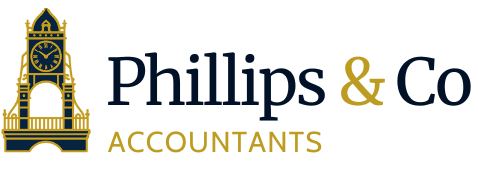Date: April 17, 2025
The new 2025/26 tax year is upon us (starting April 6th, 2025), and for business owners, it’s the perfect time to think strategically about how you take money out of your company. Efficient profit extraction isn’t just about accessing your hard-earned cash; it’s about doing so in the most tax-efficient way possible. The ‘best’ method depends heavily on your business structure, profit levels, personal circumstances, and goals. Let’s explore the common options.
1. Sole Traders & Partnerships: Drawings
If you operate as a sole trader or in a traditional partnership (not an LLP), extracting profit is straightforward. You simply take ‘drawings’ – withdrawing cash from the business bank account for personal use.
- How it’s Taxed: Drawings themselves aren’t taxed directly. Instead, you pay Income Tax and Class 2 & Class 4 National Insurance Contributions (NICs) on the total taxable profits of the business via your annual Self-Assessment tax return, regardless of how much you actually withdrew as drawings.
- Pros: Simple administration.
- Cons: Less flexibility for tax planning compared to a limited company. Your personal liability for business debts is unlimited.
2. Limited Companies: More Strategic Options
Operating through a limited company offers significantly more flexibility for tax-efficient profit extraction. Here are the main methods directors/shareholders use:
a) Salary (via PAYE)
- How it works: The company pays you a salary like any employee, deducting Income Tax and NICs through the PAYE system.
- Pros:
- The salary (and employer NICs) is a deductible expense for the company, reducing its Corporation Tax bill.
- Qualifies you for state pension and certain benefits.
- A common strategy is to pay a relatively low salary, often up to the National Insurance Lower Earnings Limit or Primary Threshold, to minimise Income Tax and NIC liabilities while still qualifying for state benefits.
- Cons: Subject to Income Tax and both Employee and Employer NICs above certain thresholds, which can result in significant deductions.
b) Dividends
- How it works: Paid to shareholders (who are often also the directors) out of the company’s post-Corporation Tax profits.
- Pros:
- Dividends are NOT subject to National Insurance Contributions for either the recipient or the company.
- Can be more tax-efficient than salary, especially for higher amounts, due to specific dividend tax rates and the Dividend Allowance (check current 2025/26 allowance).
- Cons:
- Not a deductible expense for Corporation Tax (paid after CT).
- Require sufficient post-tax profits and correct company law procedures (board minutes) to declare legally.
- Subject to dividend tax rates above the allowance.
c) Pension Contributions (Employer)
- How it works: The limited company makes contributions directly into your personal pension scheme.
- Pros:
- Highly tax-efficient: Generally treated as an allowable business expense (reducing Corporation Tax).
- No Income Tax or NICs liability for you personally on the contribution.
- Funds grow tax-free within the pension wrapper.
- Cons: Funds are locked away until pension access age (currently 55, rising to 57). Subject to Annual Allowance limits.
d) Benefits in Kind
- How it works: The company provides non-cash benefits, such as a company car, private health insurance, etc.
- Pros: Can provide value beyond cash extraction. Some benefits, like low-emission electric company cars, currently have favourable tax treatment.
- Cons: Most benefits are taxable and subject to NICs (reported on form P11D), which can be complex and sometimes costly. Needs careful evaluation.
e) Director’s Loans
- How it works: You borrow money from the company, creating a loan account.
- Pros: Can provide short-term access to funds.
- Cons: Use with extreme caution. Strict rules apply. Loans over £10,000 may trigger tax implications (Benefit in Kind). If the loan isn’t repaid within 9 months of the company’s year-end, the company may face a significant tax charge (s455 tax). Not typically recommended as a primary profit extraction strategy.
Key Considerations for 2025/26
The optimal mix of salary, dividends, and pension contributions depends heavily on the prevailing tax rates and allowances for the 2025/26 tax year. Factors like:
- Income Tax bands and rates
- National Insurance thresholds and rates (Employee and Employer)
- Corporation Tax rates
- Dividend Allowance and tax rates
…all influence the calculations. It’s crucial to use the specific rates and allowances applicable to the 2025/26 tax year for accurate planning.
Planning is Essential – Get Professional Advice
There’s no single “best” way to extract profit that suits everyone. The most tax-efficient strategy depends entirely on your limited company’s profit levels, your personal income needs, other income sources you may have, your long-term financial goals, and your attitude to risk.
Attempting complex strategies without advice can lead to errors and unexpected tax bills.
Need Help Planning Your Profit Extraction?
The start of the 2025/26 tax year is the ideal time to review your profit extraction strategy. The team at Phillips & Co Accountants in Chester can provide tailored advice based on your specific business structure and circumstances. We help businesses in Chester ensure they are operating as tax-efficiently as possible.
Contact us today for a consultation! Call/WhatsApp: +44(1244) 220-062 or visit our website.
Disclaimer
The information contained in this blog is for general guidance only. It does not constitute professional advice and should not be relied upon as such. Always seek tailored advice from a qualified accountant regarding your specific circumstances.
